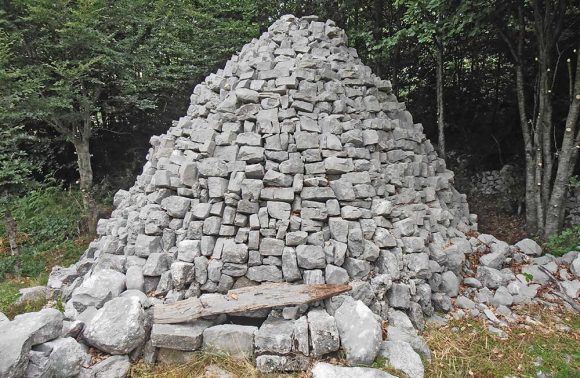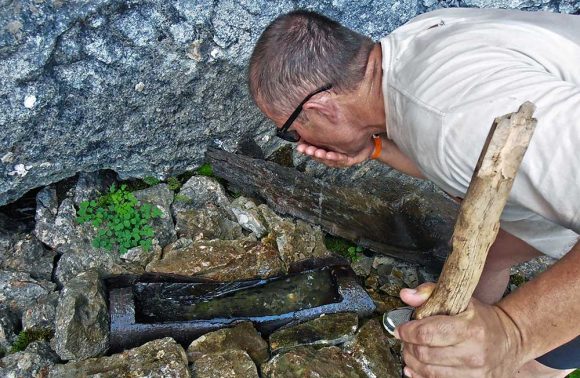Water in Karst
In the rainy season Boka Bay looks more like a nordic fjord,than as a mediteranean bay, as the salt level is lowerthan usually and colour of the sea is more green than blue. Eventhough the water is rapidly getting through, Orjen is not completely without water, as you could think. People used to pass on, from generation to generation, the knowledge about survival techniques in this water lacking mountain. Each drop of water was precious. There was never enough water for the cattle and other animals. This is why, when people needed water, brooks were strictly surveilled. There were set rules how much, when, and who can take the water. Some people stole water. These things doesn’t exist anymore. In a quest for a better life, highlanders moved away. There are just traces in the stone, that just a skilled reader can understand, what was like to live in this karst, in a constant quest for water. The most drastic examples of winning this harsh karst over, are water supplies called “kapavice”,(kind of cave where water is dropping from the wall) and snow pits. Kapavice are too week, and could easily peter. Snow pits are hard to handle. You have to take the snow out, sometimes from a long distance and then melt snow into water. To make this hard work easier, highlanders had been trying to make these places with water more approachable. Every inch closer to the water supply ment a lot as they needed water for animals. If animals couldn’t get to the water, shepherd had to take the water to the nearest place usually to the some kind of sink made of pine tree. Pine tree was very appreciated, for its indurance as the sink made of this wood could be used even for 50 years. A sink made of beech tree could also last long, but only if kept wet, thus it was less appreciated.
It is hard to find any data considering human activities in the snow pits and caves. Old generations are gone, younger generations emigrated, and most of the knowledge disappeared. All these water supplies scattered all over Orjen make a unique collage of extremely difficult live conditions in this karst region.







